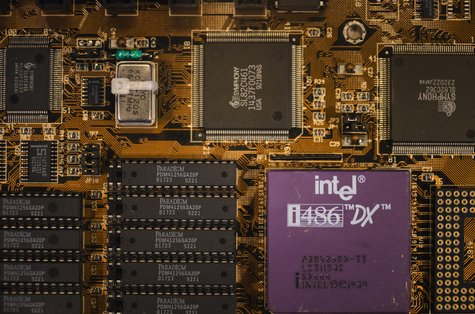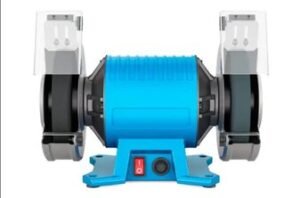
The Function of What Does Cardpop l 82v8 Emmc B Do: What Does It Do?
The world of digital devices is filled with an array of components, each performing a specific function that contributes to the overall functionality of the device. One such component that plays a crucial role in modern electronics is the eMMC storage, particularly models like the Cardpop L 82V8 eMMC B. But what exactly does it do, and why is it so important for your devices? This article will explore the functionality of the Cardpop L 82V8 eMMC B, its importance, and its impact on the performance of your electronic gadgets.
What is eMMC Storage?
Before diving into the specific details of the Cardpop L 82V8 eMMC B, it’s essential to understand what eMMC storage is. eMMC stands for embedded MultiMediaCard, which is a type of flash memory storage commonly used in smartphones, tablets, cameras, and even some laptops. It is an integrated memory solution, meaning that it combines the memory chip and the controller in a single package.
eMMC storage is often used as a cost-effective alternative to other types of memory, such as SSDs (Solid State Drives) or UFS (Universal Flash Storage), particularly in budget devices. It is slower compared to high-end storage solutions, but it offers sufficient speed for most basic tasks and is inexpensive to produce.
The Role of Cardpop L 82V8 eMMC B
The Cardpop L 82V8 eMMC B is one particular model of eMMC storage that is used in various devices. Like other eMMC modules, it serves as the storage medium for a range of electronic devices, storing everything from operating systems to apps and multimedia files. The “L 82V8” in its name likely refers to a specific version or series of the eMMC chip, with “B” possibly indicating a specific variation or configuration of the model.
This eMMC module allows devices to access and store data efficiently, contributing to the overall speed and functionality of the device. It handles tasks such as storing the device’s firmware, system updates, and applications. As such, it is a critical component for devices running on lower-cost or mid-range processors that don’t require the speed or complexity of higher-end storage solutions.
How Does Cardpop L 82V8 eMMC B Work?
The operation of the Cardpop L 82V8 eMMC B is straightforward yet essential. eMMC works similarly to other flash memory technologies by utilizing NAND flash memory cells to store data. These cells are non-volatile, meaning they retain data even when the device is powered off.
The Cardpop L 82V8 eMMC B module contains both a flash memory array and a memory controller. The flash array stores the data, while the controller manages data read and write operations. When you perform a task on your device, such as launching an app or saving a photo, the data is processed by the memory controller, which then communicates with the flash memory cells to read or write the required data.
eMMC operates using a parallel interface, which means data is transferred through multiple channels at once. This is a step up from older memory types that used a single channel, which contributed to slower data transfer speeds. However, while eMMC offers parallel data channels, it still cannot match the speeds of SSDs or UFS, which have more advanced technology and can handle more complex data transfer protocols.
Benefits of Using Cardpop L 82V8 eMMC B
-
Cost-Effective Storage Solution
One of the main reasons eMMC storage, such as the Cardpop L 82V8 eMMC B, is popular in budget and mid-range devices is its affordability. The production cost is lower compared to SSDs or UFS, making it ideal for devices that need a lower-cost solution without sacrificing too much performance. -
Sufficient for Basic Use
The Cardpop L 82V8 eMMC B is suitable for devices that do not require high-speed data access or large storage capacities. For simple tasks like web browsing, social media, and running basic applications, the eMMC performs adequately, providing enough storage for users who don’t need an extreme amount of space or speed. -
Low Power Consumption
Like most flash storage technologies, eMMC consumes relatively low amounts of power, making it ideal for use in portable devices that rely on battery life. Devices such as smartphones and tablets benefit from the low energy consumption of eMMC storage, as it helps conserve battery power. -
Compact Form Factor
eMMC storage is small and compact, which allows manufacturers to integrate it into various devices with limited space. Its small size makes it suitable for smartphones, tablets, and other compact electronics, where space is at a premium. -
Reliability
Since eMMC storage is solid-state, it has no moving parts, unlike traditional hard drives. This enhances its durability and reliability, as it is less susceptible to physical damage from drops or bumps. For mobile devices that undergo constant movement, the durability of eMMC is a key advantage.
Performance of Cardpop L 82V8 eMMC B
While eMMC storage provides several benefits, it also has limitations, particularly in terms of speed. The Cardpop L 82V8 eMMC B, like other eMMC models, offers read and write speeds that are lower than those of SSDs or UFS. For instance, eMMC can typically achieve read speeds up to 400 MB/s, whereas UFS can reach speeds of 2,000 MB/s or higher.
Despite the slower speeds, the Cardpop L 82V8 eMMC B is still sufficient for tasks that do not demand high bandwidth, such as browsing the web, watching videos, or using apps. However, for more demanding applications, such as gaming, video editing, or running complex software, higher-speed storage solutions like SSDs or UFS are recommended.
Use Cases for Cardpop L 82V8 eMMC B
The Cardpop L 82V8 eMMC B is commonly used in a variety of electronic devices, including:
-
Smartphones and Tablets
Many budget and mid-range smartphones use eMMC storage, including the Cardpop L 82V8 eMMC B. These devices typically offer good performance for everyday use, thanks to the eMMC’s reliability and energy efficiency. -
Digital Cameras
Digital cameras, particularly entry-level and mid-range models, often use eMMC storage to store photos and videos. The low cost and compact nature of eMMC make it ideal for these devices, where fast data transfer speeds are less crucial. -
Embedded Systems
eMMC storage is frequently found in embedded systems, such as industrial equipment, IoT devices, and automotive systems. These applications do not typically require high storage capacities, but eMMC provides the reliability and low power consumption needed for long-term operation. -
Consumer Electronics
Devices like smart TVs, set-top boxes, and other consumer electronics also use eMMC storage for running software, storing settings, and saving other essential data.
Limitations of Cardpop L 82V8 eMMC B
While the Cardpop L 82V8 eMMC B offers a great balance of affordability, reliability, and efficiency, it does have its drawbacks:
-
Limited Speed
As mentioned earlier, eMMC storage is slower compared to other storage options like SSDs or UFS. This makes it less suitable for high-performance tasks. -
Storage Capacity
eMMC storage typically offers lower capacities compared to SSDs. While modern eMMC modules can store up to 256 GB or more, this may not be sufficient for users who need large storage spaces for games, multimedia files, or other data-heavy applications. -
Lack of Future-Proofing
As technology continues to advance, devices with eMMC storage may eventually become obsolete for more demanding applications. The slow data speeds and limited capacities of eMMC will likely push manufacturers to adopt faster and more efficient storage technologies.
Conclusion
The Cardpop L 82V8 eMMC B is an essential component for many budget-friendly and mid-range electronic devices. It provides an affordable and reliable storage solution for users who do not require the speed or capacity offered by SSDs or UFS. While it may not be suitable for power users or those with high-performance needs, the Cardpop L 82V8 eMMC B excels in providing efficient, low-cost storage for everyday tasks. Understanding its function and limitations will help you determine if it is the right choice for your devices, balancing cost, performance, and power efficiency effectively.






![Swimsuit Edition [Abbb] - 1.20 21 Swimsuit Edition - Chapter](https://www.geniussclick.com/wp-content/uploads/2025/07/rsz_swimsuit_edition_abbb_-_120_21_swimsuit_edition_-_chapter-300x199.jpg)





Post Comment